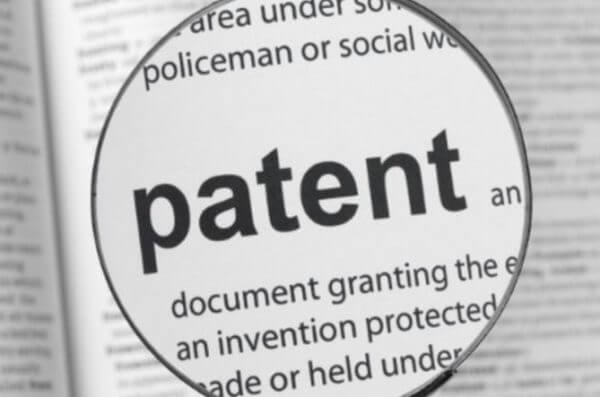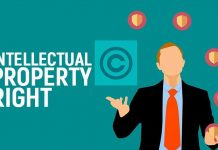This article has been written by Ashok Ram Kumar & Pratyusha Ganesh.
Table of Contents
Introduction
“I don’t create companies for the sake of creating companies, but to get things done.” – Elon Musk
Elon Musk, the wealthiest man in the world, has become the epitome of innovation and success. Musk, the South African-born US entrepreneur is the CEO of SpaceX and Tesla and has a net worth of $195 billion.
On June 12th 2014, Elon Musk, CEO and Chief Product Architect of electric car company Tesla Motors, declared that “Tesla will not initiate patent lawsuits against anyone who, in good faith, wants to use our technology.”
“We believe that Tesla, other companies making electric cars, and the world would all benefit from a common, rapidly-evolving technology platform,” Musk added.
According to the revelation made in his blog, if a company wants to use Tesla’s patents for free, they cannot sue Tesla for infringement of their own patents i.e.; the company could safely use the patents of the company using its own parents. “Open Sourcing” of patents by the latter company is irrelevant as they couldn’t sue Tesla for infringement of any kind of Intellectual Property (including trademark and copyright infringement, and trade secret misappropriation) based on their agreement to use Tesla’s patents in “good faith”.
On a superficial level, the above reasons convince us that Tesla’s motive was for the global benefit but on a deeper understanding, it is evident that the effect of the production of electric cars on climate change remains controversial, it urges to clarify that Tesla is a company with business objectives.
The smart lawyering strategy used by Tesla in its patent pledge is discussed below:
The phenomena might seem like a fair trade-off to the outsiders but it is an attempt to scare away plenty of businesses, especially established companies with an extensive patent portfolio.
Secondly, it limits a company’s ability to challenge the validity of a Tesla patent.
And thirdly, suppresses the protection of the Pledge from those who market or sell a “knock-off” or provide material assistance to another party doing so.
Therefore, any company using Tesla’s patented technology must make sure that it does not get criticized for “selling a knock-off” by way of its product design.
What is the intention behind the big change? Why would a company give its patents away for free when it had spent years developing and protecting its technology from its global competitors?
There seems to be more than one perspective to this argument.
According to Musk, this initiative was to fight climate change, but on putting it to use, Tesla created a limited, open-source patent pool for the technologies used to build its electric vehicles (EVs) — including for vehicle components, battery charging, energy storage and power optimization.
The intention behind this step was to increase the size of the automobile market thereby increasing the share of Tesla in it. The company was probably observing the market and waiting to initiate the step, once it felt that there was no threat from competition.
Tesla’s perception of the future is electric-powered automobiles and advanced energy storage systems. The world’s fuel delivery system has to be revolutionized and changed for the consumers to shift from the internal combustion engines. This change is quite evident as more and more people are choosing to buy EVs, over other vehicles.
By opening up its patents, the company encourages others to build electric vehicles. The manufacturing increases and the industry gets bigger and therefore, everyone gets a larger slice.
Some also believe that the company opted for free patents to counterbalance the “battery-based electric cars and hydrogen fuel-cell cars” which are the two most promising alternative energy vehicle technologies and use them in its favour.
The reasoning behind this statement is that if other automobile manufacturers adopt the patents of tesla due to their open/ free nature, the EV Technology might become ordinary and conventional. Due to this, the component suppliers might invest in the EV technology rather than the conflicting hydrogen fuel-cell vehicle technology.
For instance, in 2015 Toyota pledged the granting of a license to third parties, at no cost, to use its patented technologies. It made 5,680 patents related to fuel cell drive systems available on a royalty-free basis until the end of 2030. At that point of time, this move appeared to be more realistic and feasible for impacting the automotive sector as it provided technical support to other producers developing and selling EV’s when they use Toyota’s products (Ellis, 2019). This support was provided upon the payment of a fee and showcased the positive action for a change in the technology and impacting the sector.
The only difference between Musk and the other established automobile manufacturers is that they have only worked consistently on the Electric Vehicles market. They can afford to adapt to new market opportunities over time. Tesla’s dream of turning into profit has become a reality after all these years.
According to the Minister of MSMEs and Road Transport and Highways, Nitin Gadkari, Tesla is expected to start its operations in India early, this year. He also added that “India is going to become a number 1 manufacturing hub for auto in five years”.
What benefits can India reap by the “open sourcing” of the patents of Tesla?
The automobile industry is one of the most important contributors to the economic growth in India and the most successful sectors in which the country has high participation in global value chains (GVCs). It has only seen accelerated growth in the past decade and provides direct as well as indirect employment to more than 29 million people in the country.
India as a nation is the prime location for many multinational automobile companies who wish to expand their business in Asia. The Indian automobile giants have made a considerable number of efforts for upgrading in the past few years such as the use of advanced modular platforms, new materials, and platform sharing in India. The concept of upgrading refers to the capacity of firms to make better products, more efficiently, and move into more skilled activities.
However, suppliers or vendors are usually small and medium enterprises (SMEs) and do not have the opportunities or resources to upgrade. There is usually not a lot of investments made in the R&D sector or for protecting their patents.
Irrespective of the actual manufacturer’s intention, the concept of “Free Patents” is definitely a boon for the small and medium scale Indian auto industries.
A few years back, Indian automobile giant Mahindra and Mahindra reviewed Tesla’s patents to apply them in its electric vehicles.
But two year later, they changed their mind and decided to not use Tesla’s patents saying that they have quite a few of their own and can monetise on the same.
Patent of addition
Any improvement or modification of an already existing patent of an invention can be protected by a “Patent of Addition” in India. It is granted for protecting the novel, industrial applicability and non-inventive improvements or modifications in an already-filed or granted the patent application.
In an instance where the patent for the main invention is revoked or cancelled under the Act, the patent of addition can become an independent patent at the option of the patentee for the remainder of its life span. It is also important to note that the patentee is at no obligation to pay any renewable fees except on becoming an independent patent.
In the case of consequential technologies that might have come up in the process of Manufacturing EV’s by Tesla, a patent of addition might be granted which will, according to their pledge, be “open” or “free”.
To know more about Patents please visit:
Conclusion
Tesla has established its unique spot in the market by doing what Musk does the best, “going against the grain”. It has smartly used its patent pool to establish industry standards for Electric Vehicles.
The band sets a high standard and is an example for the new age innovators. There are also a few discussions in the sphere that the company might not be aware of the deeper effects of its move at the time of making it. There are chances that Musk might not have foreseen the big picture of the potential reactions from competitors and suppliers; and other probable scenarios. Nonetheless, the move worked out in Tesla’s favour and has to an extent, revolutionized how the entire world travels.
LawSikho has created a telegram group for exchanging legal knowledge, referrals and various opportunities. You can click on this link and join:
 Serato DJ Crack 2025Serato DJ PRO Crack
Serato DJ Crack 2025Serato DJ PRO Crack











 Allow notifications
Allow notifications



